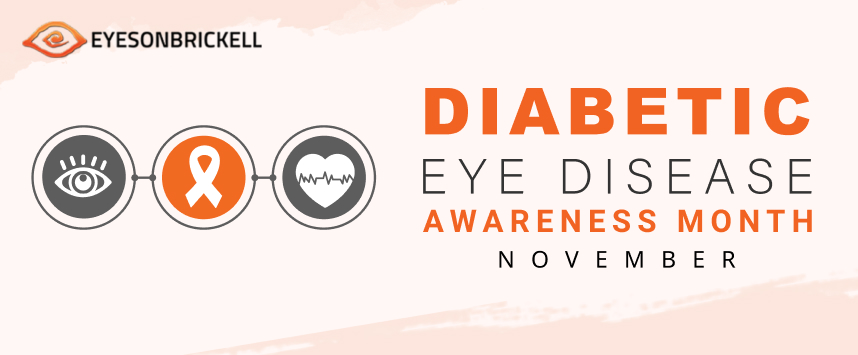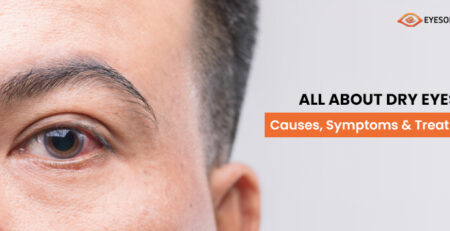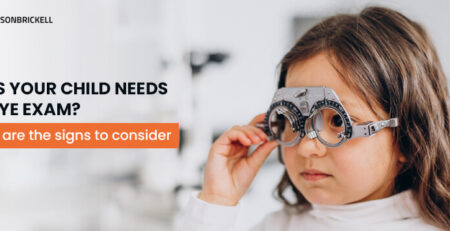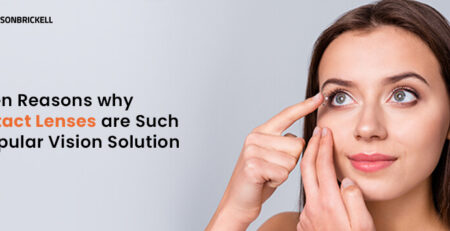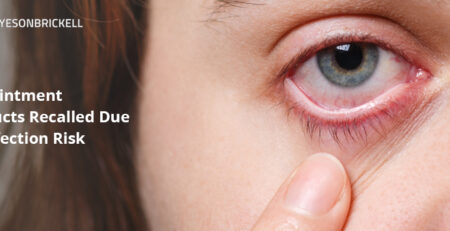November Diabetic Eye Disease Awareness: Tips for Maintaining Healthy Vision
November marks National Diabetic Eye Disease Awareness Month, a crucial time to spread knowledge about the often-overlooked complications of diabetes, particularly diabetic eye disease. With nearly 7.7 million Americans affected by this condition, understanding its implications is vital for eye health. Diabetic eye disease encompasses a range of issues, including diabetic retinopathy, cataracts, and glaucoma, which can lead to serious vision problems if not managed properly.
At Eyes on Brickell, we go beyond eye care; we provide essential knowledge to help you maintain optimal vision health. This blog aims to provide valuable insights into maintaining healthy vision, highlighting practical tips for prevention and early detection. By prioritizing eye health and staying informed, those living with diabetes can protect their vision and enhance their quality of life.
What You Need to Know About Diabetic Eye Disease
Diabetic eye disease refers to a group of eye conditions that can affect individuals with diabetes. The most common type is diabetic retinopathy, which occurs when high blood sugar levels damage the blood vessels in the retina—the light-sensitive tissue at the back of the eye. This condition can lead to vision problems and, if left untreated, may result in blindness.
This Diabetic Eye Disease Awareness Month, it’s important to recognize the different stages of diabetic retinopathy: non-proliferative and proliferative. In the non-proliferative stage, blood vessels may swell and leak fluid, causing blurred vision. In the proliferative stage, new, fragile blood vessels grow, which can bleed into the eye, leading to more severe vision loss.
In addition to retinopathy, people with diabetes are also at increased risk for cataracts and glaucoma. Cataracts cause clouding of the lens, while glaucoma damages the optic nerve, often leading to vision loss.
Regular eye exams are crucial for detecting diabetic eye disease early, as symptoms may not appear until significant damage has occurred. By managing blood sugar levels and maintaining a healthy lifestyle, individuals with diabetes can reduce their risk of developing these eye conditions and protect their vision for the future.
Common Symptoms of Diabetic Eye Disease
Diabetic eye disease can develop without noticeable symptoms in its early stages, making regular eye exams essential for early detection. However, as the condition progresses, several symptoms may arise, indicating potential issues. Here are the common symptoms associated with diabetic eye disease you should be aware of this Diabetic Eye Disease Awareness Month:
1. Blurry Vision
One of the most common symptoms, blurred vision can occur intermittently or become more persistent over time. This blurriness may fluctuate, particularly during periods of high blood sugar.
2. Floaters
Individuals may notice small spots, strings, or cobweb-like shapes drifting through their field of vision. These floaters can result from changes in the vitreous gel inside the eye and may signal more severe underlying issues.
3. Dark or Empty Areas in Vision
Some people may experience dark or empty spots in their vision, often caused by bleeding in the eye or damage to the retina. These areas can grow larger over time, impacting overall vision quality.
4. Difficulty Seeing at Night
Night vision may become particularly challenging for those with diabetic eye disease. This symptom can manifest as trouble adjusting to low-light conditions or decreased clarity in dim environments.
5. Colors Appearing Faded
Changes in color perception, where colors appear washed out or less vibrant, can occur. This symptom may indicate retinal damage affecting the ability to distinguish between colors effectively.
6. Increased Sensitivity to Light
Individuals may find that they become more sensitive to bright lights, causing discomfort or glare. This heightened sensitivity can make it difficult to perform daily activities in well-lit environments.
Why Are Regular Eye Check-ups Important?
Regular eye check-ups are essential for everyone, especially for individuals with diabetes, as they can help detect diabetic eye disease and other vision-related issues early. Here are several reasons why regular eye exams are crucial:
1. Early Detection of Diabetic Eye Diseases
During Diabetic Eye Disease Awareness Month, it’s essential to highlight the importance of early detection in managing eye health for people with diabetes. Many eye diseases, including diabetic retinopathy, glaucoma and cataracts, develop without noticeable symptoms. Regular check-ups during this awareness month can remind individuals to prioritize their eye health, allowing eye care professionals to identify early signs of these conditions before significant damage occurs.
2. Prevent Vision Loss
Early intervention is key to preventing vision loss associated with diabetic eye disease. Timely treatment can slow the progression of the disease and, in some cases, restore lost vision.
3. Monitor Changes in Eye Health
Eye Disease Awareness Month emphasizes the need for regular eye exams for those with diabetes. Over time, diabetes can cause changes in eye health, and routine check-ups help doctors track these changes and adjust treatments to protect vision.
4. Assess Overall Health
Eye exams can provide insights into overall health, as certain eye conditions can indicate systemic issues. For instance, high blood pressure and diabetes can be detected through eye examinations.
5. Personalized Care and Treatment Plans
Regular visits allow eye care professionals to create personalized care plans based on an individual’s specific needs, including managing diabetes and eye health effectively.
6. Access to Professional Guidance
During eye exams, patients receive valuable guidance on maintaining healthy vision. Eye care professionals can provide tips on managing diabetes, including diet, lifestyle changes, and monitoring blood sugar levels.
Eye Health Practices for Diabetics: Preventing Ocular Disease
Maintaining healthy vision is crucial, especially for individuals with diabetes. Here are practical tips to help protect your eyesight and promote overall eye health:
1. Control Blood Sugar Levels
Keeping blood sugar levels within the target range is vital for preventing diabetic eye disease. Work with your healthcare provider to develop a management plan that includes regular monitoring, medication, and dietary adjustments.
2. Schedule Regular Eye Exams
Visit an eye care professional for comprehensive eye exams at least once a year, or as recommended. Early detection of diabetic eye disease can prevent severe vision loss.
3. Protect Your Eyes from UV Rays
Wearing sunglasses with UV protection can help shield your eyes from harmful rays, reducing the risk of cataracts and other eye conditions. Choose sunglasses that block 100% of UVA and UVB rays.
4. Stay Physically Active
Regular physical activity helps control blood sugar levels, lowers blood pressure, and reduces the risk of diabetes-related complications. Aim for at least 150 minutes of moderate exercise each week.
In conclusion, prioritizing eye health is essential, especially for individuals living with diabetes. Regular eye exams and proactive management of blood sugar levels can significantly reduce the risk of diabetic eye disease and its complications. By adopting healthy lifestyle choices and staying informed about eye health, you can protect your vision.
Schedule Your Appointment at Eyes on Brickell Today!
This November, let’s prioritize your vision health during Diabetic Eye Disease Awareness Month. At Eyes on Brickell, we offer expert advice and comprehensive eye exams tailored to the unique needs of individuals with diabetes. Visit us at 2885 SW, 3rd Ave Miami, FL 33129, or schedule an eye exam to discuss how to maintain your eye health best. Our advanced diagnostic tools and personalized care ensure your vision stays sharp and protected. Call us today or visit our website to book your appointment and safeguard your eyes for the future.

